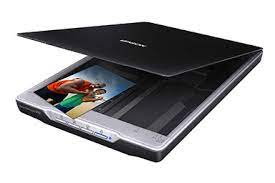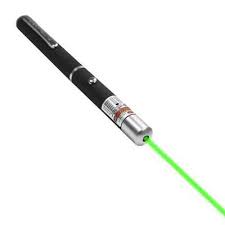HOWRAH BRIDGE (हावड़ा सेतु )

रवीन्द्र सेतु भारत के पश्चिम बंगाल में हुगली नदी के उपर बना एक "कैन्टीलीवर सेतु" है। यह हावड़ा को कोलकाता से जोड़ता है। इसका मूल नाम "नया हावड़ा पुल" था जिसे बदलकर १४ जून सन् १९६५ को 'रवीन्द्र सेतु' कर दिया गया। किन्तु अब भी यह "हावड़ा ब्रिज" के नाम से अधिक जाना जाता है। यह अपने तरह का छठवाँ सबसे बड़ा पुल है। सामान्यतया प्रत्येक पुल के नीचे खंभे होते है जिन पर वह टिका रहता है परंतु यह एक ऐसा पुल है जो सिर्फ चार खम्भों पर टिका है दो नदी के इस तरफ और पौन किलोमीटर की चौड़ाई के बाद दो नदी के उस तरफ। सहारे के लिए कोई रस्से आदि की तरह कोई तार आदि नहीं। इस दुनिया के अनोखे हजारों टन बजनी इस्पात के गर्डरों के पुल ने केवल चार खम्भों पर खुद को इस तरह से बैलेंस बनाकर हवा में टिका रखा है कि 80 वर्षों से इस पर कोई फर्क नहीं पडा है जबकि लाखों की संख्या में दिन रात भारी वाहन और पैदल भीड़ इससे गुजरती है। अंग्रेजों ने जब इस पुल की कल्पना की तो वे ऐसा पुल बनाना चाहते थे कि नीचे नदी का जल मार्ग न रुके। अतः पुल के नीचे कोई खंभा न हो। ऊपर पुल बन जाय और नीचे हुगली में पानी के जहाज और नाव भी बिना अवरोध चलते रहें। ये एक झूला अथवा कैंटिलिवर पुल से ही संभव था।
बुलंद दरवाज़ा

बुलन्द दरवाज़ा, भारत के उत्तर प्रदेश प्रांत में आगरा शहर से ४३ किमी दूर फतेहपुर सीकरी नामक स्थान पर स्थित एक दर्शनीय स्मारक है। इसका निर्माण अकबर ने 1602 में करवाया था। बुलन्द शब्द का अर्थ महान या ऊँचा है। अपने नाम को सार्थक करने वाला यह स्मारक विश्व का सबसे बडा़ प्रवेशद्वार है। हिन्दू और फारसी स्थापत्य कला का अद्भुत उदाहरण होने के कारण इसे "भव्यता के द्वार" नाम से भी जाना जाता है।
अकबर द्वारा गुजरात पर विजय प्राप्त करने की स्मृति में बनवाए गए इस प्रवेशद्वार के पूर्वी तोरण पर फारसी में शिलालेख अंकित हैं जो १६०१ में दक्कन पर अकबर की विजय के अभिलेख हैं। ४२ सीढ़ियों के ऊपर स्थित बुलन्द दरवाज़ा ५३.६३ मीटर ऊँचा और ३५ मीटर चौडा़ है। यह लाल बलुआ पत्थर से बना है जिसे सफेद संगमरमर से सजाया गया है। दरवाजे के आगे और स्तंभों पर कुरान की आयतें खुदी हुई हैं। यह दरवाजा एक बड़े आँगन और जामा मस्जिद की ओर खुलता है। समअष्टकोणीय आकार वाला यह दरवाज़ा गुम्बदों और मीनारों से सजा हुआ है।
दरवाजे़ के तोरण पर ईसा मसीह से संबंधित कुछ पंक्तियाँ लिखी हैं जो इस प्रकार हैं: "मरियम के पुत्र यीशु ने कहा: यह संसार एक पुल के समान है, इस पर से गुज़रो अवश्य, लेकिन इस पर अपना घर मत बना लो। जो एक दिन की आशा रखता है वह चिरकाल तक आशा रख सकता है, जबकि यह संसार घंटे भर के लिये ही टिकता है, इसलिये अपना समय प्रार्थना में बिताओ क्योंकि उसके सिवा सब कुछ अदृश्य है" बुलंद दरवाज़े पर बाइबिल की इन पंक्तियों की उपस्थिति को अकबर को धार्मिक सहिष्णुता का प्रतीक माना जाता है।
चारमीनार

चारमीनार ("चार मीनार"), 1591 में निर्मित, भारत के हैदराबाद, तेलंगाना में स्थित एक स्मारक और मस्जिद है। यह विश्व स्तर पर हैदराबाद के प्रतीक के रूप में जाना जाता है और भारत में सबसे अधिक मान्यता प्राप्त संरचनाओं में सूचीबद्ध है। चारमीनार के लंबे इतिहास में 400 से अधिक वर्षों के लिए इसकी शीर्ष मंजिल पर एक मस्जिद का अस्तित्व शामिल है। ऐतिहासिक और धार्मिक रूप से महत्वपूर्ण, यह संरचना के आसपास के लोकप्रिय और व्यस्त स्थानीय बाजारों के लिए भी जाना जाता है, और हैदराबाद में सबसे अधिक बार आने वाले पर्यटक आकर्षणों में से एक बन गया है। चारमीनार कई त्योहार समारोह की एक साइट है, जैसे कि ईद-उल-अधा और ईद-उल-फितर।
चारमीनार मुसी नदी के पूर्वी तट पर स्थित है। इसके पश्चिम में लाद बाज़ार स्थित है, और दक्षिण पश्चिम में सबसे समृद्ध ग्रेनाइट वाला मक्का मस्जिद है। इसे भारतीय पुरातत्व सर्वेक्षण द्वारा तैयार आधिकारिक "स्मारकों की सूची" में एक पुरातात्विक और वास्तुशिल्प खजाने के रूप में सूचीबद्ध किया गया है। चार और मीनार उर्दू शब्द हैं, जिसका अनुवाद "चार स्तंभ" है; एपिनेटर मीनार अलंकृत मीनार हैं जो चार भव्य मेहराबों से जुड़ी और समर्थित हैं।
गेटवे ऑफ़ इन्डिया

गेटवे ऑफ़ इन्डिया (भारत का प्रवेशद्वार) भारत के मुम्बई शहर के दक्षिण में समुद्र तट पर स्थित एक स्मारक है। स्मारक को दिसंबर 1911 में अपोलो बंडर, मुंबई (तब बॉम्बे) में ब्रिटिश सम्राट राजा-सम्राट जॉर्ज पंचम और महारानी मैरी के प्रथम आगमन की याद में बनाया गया था। शाही यात्रा के समय, प्रवेशद्वार का निर्माण नहीं हुआ था, और सम्राट को एक कार्डबोर्ड संरचना के द्वारा बधाई दी गयी थी। 16 वीं शताब्दी के गुजराती वास्तुकला के तत्वों को शामिल करते हुए, इंडो-सारासेनिक शैली में निर्मित इस स्मारक की आधारशिला मार्च 1913 में रखी गई थी। वास्तुकार जॉर्ज विटेट द्वारा स्मारक का अंतिम डिजाइन 1914 में स्वीकृत किया गया था, और इसका निर्माण 1924 में पूरा हुआ था। 26 मीटर (85 फीट) ऊँची इस संरचना का निर्माण असिताश्म (बेसाल्ट) से किया गया है और यह एक विजय की प्रतीक मेहराब है। इस प्रवेशद्वार के पास ही पर्यटकों के समुद्र भ्रमण हेतु नौका-सेवा भी उपल्ब्ध है।
इण्डिया गेट

इण्डिया गेट, (मूल रूप से अखिल भारतीय युद्ध स्मारक कहा जाता है), नई दिल्ली के राजपथ पर स्थित 42 मीटर ऊँचा विशाल गेट है। यह स्वतन्त्र भारत का राष्ट्रीय स्मारक है, जिसे पूर्व में किंग्सवे कहा जाता था। इसका डिजाइन सर एडवर्ड लुटियन्स ने तैयार किया था। यह स्मारक पेरिस के आर्क डे ट्रॉयम्फ़ से प्रेरित है। इसे सन् 1931 में बनाया गया था। मूल रूप से अखिल भारतीय युद्ध स्मारक के रूप में जाने वाले इस स्मारक का निर्माण अंग्रेज शासकों द्वारा उन 90000 भारतीय सैनिकों की स्मृति में किया गया था जो ब्रिटिश सेना में भर्ती होकर प्रथम विश्वयुद्ध और अफ़ग़ान युद्धों में शहीद हुए थे। यूनाइटेड किंगडम के कुछ सैनिकों और अधिकारियों सहित 13,300 सैनिकों के नाम, गेट पर उत्कीर्ण हैं। लाल और पीले बलुआ पत्थरों से बना हुआ यह स्मारक दर्शनीय है।
जब इण्डिया गेट बनकर तैयार हुआ था तब इसके सामने जार्ज पंचम की एक मूर्ति लगी हुई थी। जिसे बाद में ब्रिटिश राज के समय की अन्य मूर्तियों के साथ कोरोनेशन पार्क में स्थापित कर दिया गया। अब जार्ज पंचम की मूर्ति की जगह प्रतीक के रूप में केवल एक छतरी भर रह गयी है।
इण्डिया गेट के नीचे अमर जवान ज्योति
भारत की स्वतन्त्रता के पश्चात् इण्डिया गेट भारतीय सेना के अज्ञात सैनिकों के मकबरे की साइट मात्र बनकर रह गया है। इसकी मेहराब के नीचे अमर जवान ज्योति स्थापित कर दी गयी है। अनाम सैनिकों की स्मृति में यहाँ एक राइफ़ल के ऊपर सैनिक की टोपी सजा दी गयी है जिसके चारो कोनों पर सदैव एक ज्योति जलती रहती है। इस अमर जवान ज्योति पर प्रति वर्ष प्रधान मन्त्री व तीनों सेनाध्यक्ष पुष्प चक्र चढ़ाकर अपनी श्रद्धांजलि अर्पित करते हैं। इण्डिया गेट की दीवारों पर हजारों शहीद सैनिकों के नाम खुदे हैं और सबसे ऊपर अंग्रेजी में लिखा हैः
| To the dead of the Indian armies who fell honoured in France and Flanders Mesopotamia and Persia East Africa Gallipoli and elsewhere in the near and the far-east and in sacred memory also of those whose names are recorded and who fell in India or the north-west frontier and during the Third Afgan War. |
भारतीय सेनाओं के शहीदों के लिए, जो फ्रांस और फ्लैंडर्स मेसोपोटामिया फारस पूर्वी अफ्रीका गैलीपोली और निकटपूर्व एवं सुदूरपूर्व की अन्य जगहों पर शहीद हुए और उनकी पवित्र स्मृति में भी जिनके नाम दर्ज़ हैं और जो तीसरे अफ़ग़ान युद्ध में भारत में या उत्तर-पश्चिमी सीमा पर मृतक हुए।
|
जामा मस्जिद
जामा मस्जिद दिल्ली में स्थित एक मस्जिद है। इसका निर्माण सन् 1656 में हुआ था।
यह मस्जिद लाल पत्थरों और संगमरमर का बना हुआ है। लाल किले से महज 500 मी. की दूरी पर जामा मस्जिद स्थित है जो भारत की सबसे बड़ी मस्जिद है। इस मस्जिद का निर्माण 1650 में शाहजहां ने शुरु करवाया था। इसे बनने में 6 वर्ष का समय और 10 लाख रु.लगे थे। बलुआ पत्थर और सफेद संगमरमर से निर्मित इस मस्जिद में उत्तर और दक्षिण द्वारों से प्रवेश किया जा सकता है।
पूर्वी द्वार केवल शुक्रवार को ही खुलता है। इसके बारे में कहा जाता है कि सुल्तान इसी द्वार का प्रयोग करते थे। इसका प्रार्थना गृह बहुत ही सुंदर है। इसमें ग्यारह मेहराब हैं जिसमें बीच वाला महराब अन्य से कुछ बड़ा है। इसके ऊपर बने गुंबदों को सफेद और काले संगमरमर से सजाया गया है जो निजामुद्दीन दरगाह की याद दिलाते हैं।
लोटस टेंपल या कमल मंदिर

लोटस टेंपल या कमल मंदिर, भारत की राजधानी दिल्ली के नेहरू प्लेस (कालकाजी मंदिर) के पास स्थित एक बहाई (ईरानी धर्मसंस्थापक बहाउल्लाह के अनुयायी) उपासना स्थल है। यह अपने आप में एक अनूठा मंदिर है। यहाँ पर न कोई मूर्ति है और न ही किसी प्रकार का कोई धार्मिक कर्म-कांड किया जाता है, इसके विपरीत यहाँ पर विभिन्न धर्मों से संबंधित विभिन्न पवित्र लेख पढ़े जाते हैं। भारत के लोगों के लिए कमल का फूल पवित्रता तथा शांति का प्रतीक होने के साथ ईश्वर के अवतार का संकेत चिह्न भी है। यह फूल कीचड़ में खिलने के बावजूद पवित्र तथा स्वच्छ रहना सिखाता है, साथ ही यह इस बात का भी द्योतक है कि कैसे धार्मिक प्रतिस्पर्धा तथा भौतिक पूर्वाग्रहों के अंदर रह कर भी, कोई व्यक्ति इन सबसे अनासक्त हो सकता है। कमल मंदिर में प्रतिदिन देश और विदेश के लगभग आठ से दस हजार पर्यटक आते हैं। आनेवाले सभी पर्यटकों को बहाई धर्म का परिचय दिया जाता है और मुफ्त बहाई धार्मिक सामग्री वितरित की जाती है। यहाँ का शांत वातावरण प्रार्थना और ध्यान के लिए सहायक है।
मंदिर का दूर से लिया चित्र
मंदिर का उद्घाटन 24 दिसंबर 1986 को हुआ लेकिन आम जनता के लिए यह मंदिर १ जनवरी 1987 को खोला गया। इसकी कमल सदृश आकृति के कारण इसे कमल मंदिर या लोटस टेंपल के नाम से ही पुकारा जाता है। बहाई उपासना मंदिर उन मंदिरों में से एक है जो गौरव, शांति एवं उत्कृष्ठ वातावरण को ज्योतिर्मय करता है, जो किसी भी श्रद्धालु को आध्यात्मिक रूप से प्रोत्साहित करने के लिए अति आवश्यक है। उपासना मंदिर मीडिया प्रचार प्रसार और श्रव्य माध्यमों में आगंतुकों को सूचनाएं प्रदान करता है। मंदिर में पर्यटकों को आर्किषत करने के लिए विस्तृत घास के मैदान, सफेद विशाल भवन, ऊंचे गुंबद वाला प्रार्थनागार और प्रतिमाओं के बिना मंदिर से आकर्षित होकर हजारों लोग यहां मात्र दर्शक की भांति नहीं बल्कि प्रार्थना एवं ध्यान करने तथा निर्धारित समय पर होने वाली प्रार्थना सभा में भाग लेने भी आते हैं। यह विशेष प्रार्थना हर घंटे पर पांच मिनट के लिए आयोजित की जाती है। गर्मियों में सूचना केंद्र सुबह 09:30 बजे खुलता है, जो शाम को 06:30 पर बंद होता है। जबकि सर्दियों में इसका समय सुबह दस से पांच होता है। इतना ही नहीं लोग उपासना मंदिर के पुस्तकालय में बैठ कर धर्म की किताबें भी पढ़ते हैं और उनपर शोध भी करने आते हैं।
मीक़ुतुबनार
क़ुतुब मीनार भारत में दक्षिण दिल्ली शहर के महरौली भाग में स्थित, ईंट से बनी विश्व की सबसे ऊँची मीनार है। ऊँचाई 72.5 मीटर (237.86 फीट) और व्यास 14.3 मीटर है, जो ऊपर जाकर शिखर पर 2.75 मीटर (9.02 फीट) हो जाता है। इसमें 369 सीढियाँ हैं। मीनार के चारों ओर बने अहाते में भारतीय कला के कई उत्कृष्ट नमूने हैं, जिनमें से अनेक इसके निर्माण काल सन 1192 के हैं। यह परिसर युनेस्को द्वारा विश्व धरोहर के रूप में स्वीकृत किया गया है।
राजघाट
दिल्ली में यमुना नदी के पश्चिमी किनारे पर महात्मा गांधी की समाधि स्थित है। काले संगमरमर से बनी इस समाधि पर उनके अंतिम शब्द हे राम उद्धृत हैं। अब यह एक सुन्दर उद्यान का रूप ले चुका है। यहाँ पर सुन्दर फव्वारे और अनेक प्रकार के पेड़ लगे हुए हैं। यहाँ पास ही शांति वन में भारत के पहले प्रधानमंत्री जवाहरलाल नेहरु की समाधि भी है। भारत आने वाले विदेशी उच्चाधिकारी महात्मा गांधी को श्रद्धांजली देने के लिए राजघाट अवश्य आते हैं।
राष्ट्रपति भवन
राष्ट्रपति भवन भारत सरकार के राष्ट्रपति का सरकारी आवास है। वर्तमान भारत के राष्ट्रपति, उन कक्षों में नहीं रहते, जहां वाइसरॉय रहते थे, बल्कि वे अतिथि-कक्ष में रहते हैं। यहाँ राष्ट्रपति आगन्तुक से मिलते है। 25 जुलाई 2017 उपरांत महामहिम रामनाथ कोविंद भारत के राष्ट्रपति बनाये ।
सन 1950 तक इसे वाइसरॉय हाउस बोला जाता था। तब यह तत्कालीन भारत के गवर्नर जनरल का आवास हुआ करता था। यह नई दिल्ली के हृदय क्षेत्र में स्थित है। इस महल में 340 कक्ष हैं और यह विश्व में किसी भी राष्ट्राध्यक्ष के आवास से बड़ा है। भारत के प्रथम भारतीय गवर्नर जनरल श्री सी राजगोपालाचार्य को यहां का मुख्य शयन कक्ष, अपनी विनीत नम्र रुचियों के कारण, अति आडंबर पूर्ण लगा जिसके कारण उन्होंने अतिथि कक्ष में रहना उचित समझा। उनके उपरांत सभी राष्ट्रपतियों ने यही परंपरा निभाई।
यहां के म्यूजियम मुगल उद्यान की गुलाब वाटिका में अनेक प्रकार के गुलाब लगे हैं और यह कि जन साधारण हेतु, प्रति वर्ष फरवरी माह के दौरान खुलती है। इस भवन की खास बात है कि इस भवन के निर्माण में लोहे का नगण्य प्रयोग हुआ है।
लाल किला

लाल किला या लाल क़िला, दिल्ली के ऐतिहासिक, क़िलेबंद, पुरानी दिल्ली के इलाके में स्थित, लाल बलुआ पत्थर से निर्मित है। यद्धपि यह किला काफी पुराना है और इस किले को पाँचवे मुग़ल शासक शाहजहाँ ने अपनी राजधानी के रूप में चुना था। इस किले को "लाल किला", इसकी दीवारों के लाल-लाल रंग के कारण कहा जाता है। इस ऐतिहासिक किले को वर्ष २००७ में युनेस्को द्वारा एक विश्व धरोहर स्थल चयनित किया गया था। [1] भारत की राजधानी दिल्ली में स्थित लाल किला (Lal Kila) देश की आन-बान शान और देश की आजादी का प्रतीक है। मुगल काल में बना यह ऐतिहासक स्मारक विश्व धरोहर की लिस्ट में शामिल है और भारत के प्रमुख पर्यटन स्थलों में से एक है। लाल किला के सौंदर्य, भव्यता और आर्कषण को देखने दुनिया के कोने-कोने से लोग आते हैं और इसकी शाही बनावट और अनूठी वास्तुकला की प्रशंसा करते हैं।
यह शाही किला मुगल बादशाहों का न सिर्फ राजनीतिक केन्द्र है बल्कि यह औपचारिक केन्द्र भी हुआ करता था, जिस पर करीब 200 सालों तक मुगल वंश के शासकों का राज रहा। देश की जंग-ए-आजादी का गवाह रहा लाल किला मुगलकालीन वास्तुकला, सृजनात्मकता और सौंदर्य का अनुपम और अनूठा उदाहरण है।
1648 ईसवी में बने इस भव्य किले के अंदर एक बेहद सुंदर संग्रहालय भी बना हुआ है। करीब 250 एकड़ जमीन में फैला यह भव्य किला मुगल राजशाही और ब्रिटिशर्स के खिलाफ गहरे संघर्ष की दास्तान बयां करता हैं। वहीं भारत का राष्ट्रीय गौरव माने जाना वाला इस किले का इतिहास बेहद दिलचस्प है I
भारत का उच्चतम न्यायालय
उच्चतम न्यायालय भवन के मुख्य ब्लॉक को भारत की राजधानी नई दिल्ली में तिलक रोड स्थित 22 एकड़ जमीन के एक वर्गाकार भूखंड पर बनाया गया है। निर्माण का डिजाइन केन्द्रीय लोक निर्माण विभाग के प्रथम भारतीय अध्यक्ष मुख्य वास्तुकार गणेश भीकाजी देवलालीकर द्वारा इंडो-ब्रिटिश स्थापत्य शैली में बनाया गया था। न्यायालय 1958 में वर्तमान इमारत में स्थानान्तरित किया गया। भवन को न्याय के तराजू की छवि देने की वास्तुकारों की कोशिश के अंतर्गत भवन के केन्द्रीय ब्लाक को इस तरह बनाया गया है की वह तराजू के केन्द्रीय बीम की तरह लगे। 1979 में दो नए हिस्से पूर्व विंग और पश्चिम विंग को 1958 में बने परिसर में जोड़ा गया। कुल मिलकर इस परिसर में 15 अदालती कमरे हैं। मुख्य न्यायाधीश की अदालत, जो कि केन्द्रीय विंग के केंद्र में स्थित है सबसे बड़ा अदालती कार्यवाही का कमरा है। इसमें एक ऊंची छत के साथ एक बड़ा गुंबद भी है।
ताजमहल
ताजमहल भारत के आगरा शहर में स्थित एक विश्व धरोहर मक़बरा है। इसका निर्माण मुग़ल सम्राट शाहजहाँ ने अपनी पत्नी मुमताज़ महल की याद में करवाया था।[1]
ताजमहल मुग़ल वास्तुकला का उत्कृष्ट नमूना है। इसकी वास्तु शैली फ़ारसी, तुर्क, भारतीय और इस्लामी वास्तुकला के घटकों का अनोखा सम्मिलन है। सन् 1983 में, ताजमहल युनेस्को विश्व धरोहर स्थल बना। इसके साथ ही इसे विश्व धरोहर के सर्वत्र प्रशंसा पाने वाली, अत्युत्तम मानवी कृतियों में से एक बताया गया। ताजमहल को भारत की इस्लामी कला का रत्न भी घोषित किया गया है। साधारणतया देखे गये संगमर्मर की सिल्लियों की बडी- बडी पर्तो से ढंक कर बनाई गई इमारतों की तरह न बनाकर इसका श्वेत गुम्बद एवं टाइल आकार में संगमर्मर से ढंका है। केन्द्र में बना मकबरा अपनी वास्तु श्रेष्ठता में सौन्दर्य के संयोजन का परिचय देते हैं। ताजमहल इमारत समूह की संरचना की खास बात है, कि यह पूर्णतया सममितीय है। इसका निर्माण सन् १६४८ के लगभग पूर्ण हुआ था। उस्ताद अहमद लाहौरी को प्रायः इसका प्रधान रूपांकनकर्ता माना जाता है।
विक्टोरिया मेमोरियल हाल

विक्टोरिया मेमोरियल हाल ( हिन्दी अनुवाद: विक्टोरिया स्मारक शाला) या संक्षिप्त में सिर्फ विक्टोरिया मेमोरियल, भारतीय राज्य पश्चिम बंगाल के कोलकाता नगर में स्थित एक ब्रिटिश कालीन स्मारक है। 1906 से 1921 के बीच निर्मित यह स्मारक इंग्लैण्ड की तत्कालीन साम्राज्ञी महारानी विक्टोरिया को समर्पित है। इस स्मारक में विविध शिल्पकलाओं का सुंदर मिश्रण है। इसके मुगल शैली के गुंबदों पर सारसेनिक और पुनर्जागरण काल की शैलियों का प्रभाव दिखाई पड़ता है। इस भवन के अंदर एक शानदार संग्रहालय भी है जहाँ रानी के पियानो और स्टडी-डेस्क सहित 3,000 से भी अधिक अन्य वस्तुएँ प्रदर्शित की गई हैं। यह प्रतिदिन मंगलवार से रविवार तक प्रात: दस बजे से सायं साढ़े चार बजे तक खुलता है, सोमवार को यह बंद रहता है।









































.jpg)


.jpg)